30 Common Backyard Birds in Colorado (With Pictures)
Last Updated on
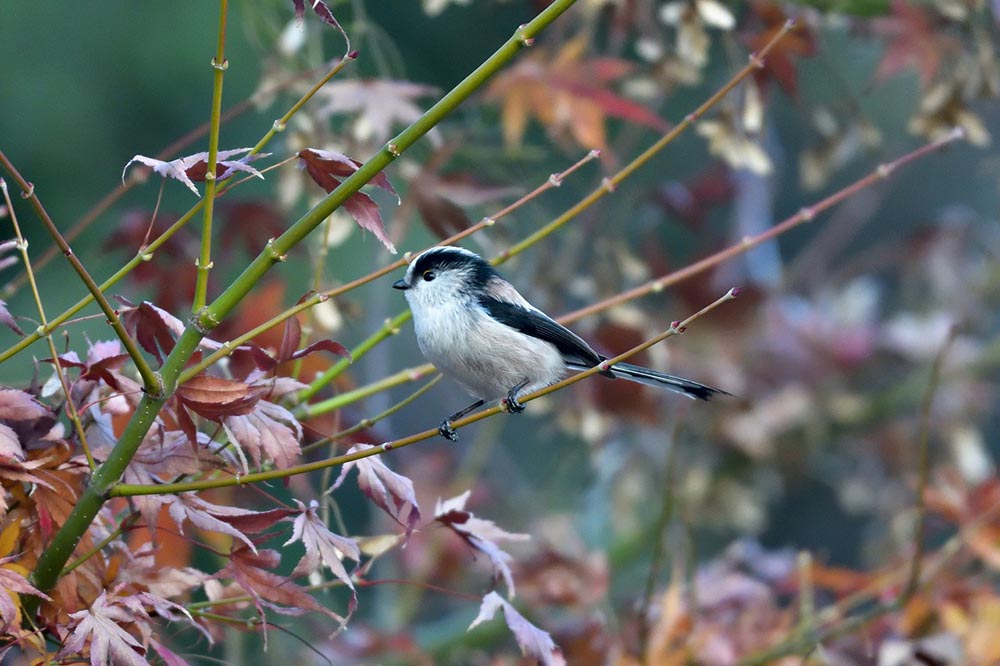
If you live in Colorado and are trying to attract birds to your yard, there are many varieties that might come visit.
While this is exciting, it can also be challenging to identify exactly what you’re seeing. There are blue, green, and red birds in the Centennial State, and songbirds are just about everywhere.
This guide will walk you through everything that you need to know about each bird and when to expect them in Colorado, as well as a few tips on how to attract specific birds to your yard and feeders!

The 30 Common Backyard Birds in Colorado (with Pictures)
1. American Robin
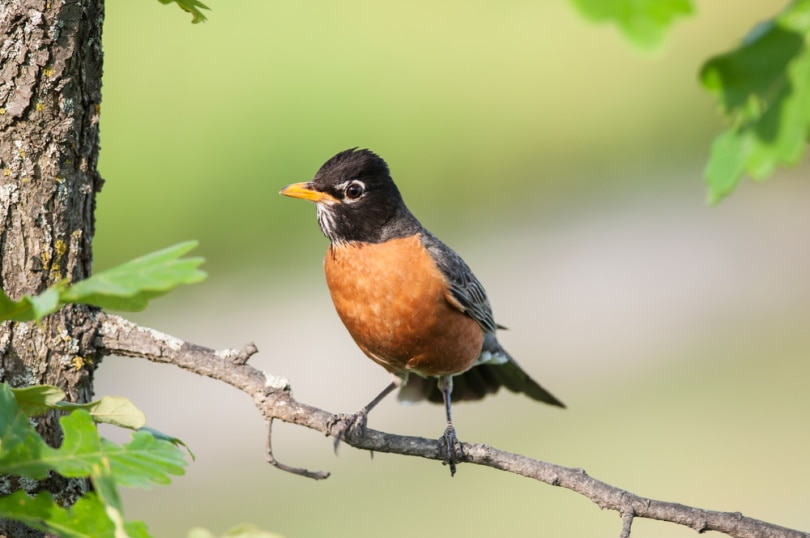
| Population: | 370 million |
| Wingspan: | 12 to 16 inches |
| Weight: | 2.7 ounces |
| Length: | 9 to 11 inches |
With a year-long presence in most of the continental United States and at least a winter presence in all of the United States, it’s no surprise to find that the American robin has a significant population in Colorado.
They spend time there throughout the entire year, so you can spot an American robin in Colorado no matter what month it is!
2. Mourning Dove
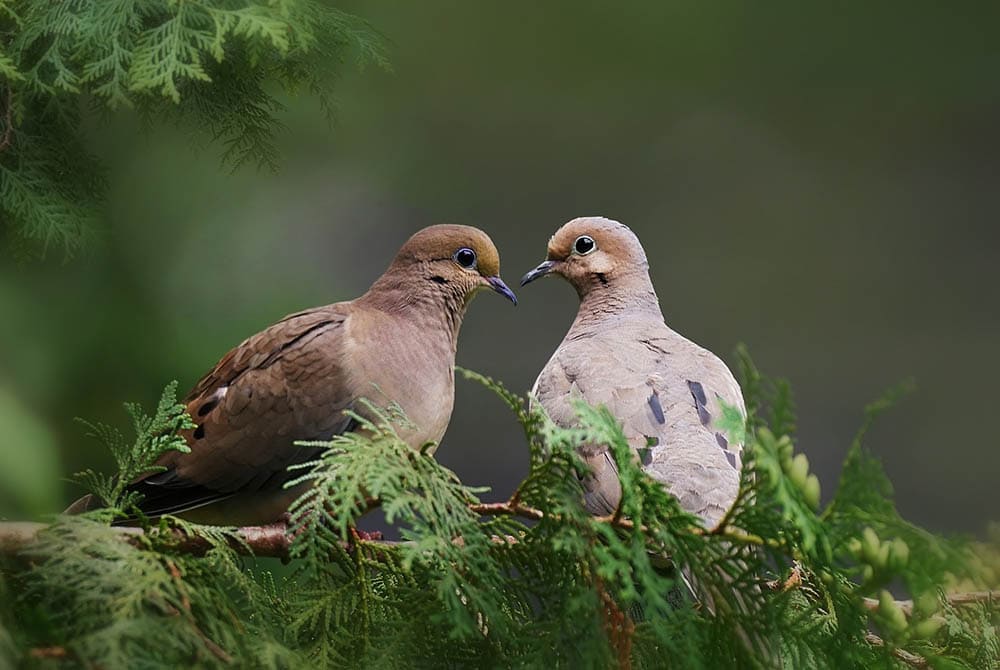
| Population: | 350 million |
| Wingspan: | 15 to 18 inches |
| Weight: | 4.2 ounces |
| Length: | 8.9 to 14 inches |
If you find a nest on the ground in Colorado, there’s a good chance that it belongs to a mourning dove. They’re not the most colorful birds, but they’re plentiful and their range extends throughout the entire United States.
3. House Finch
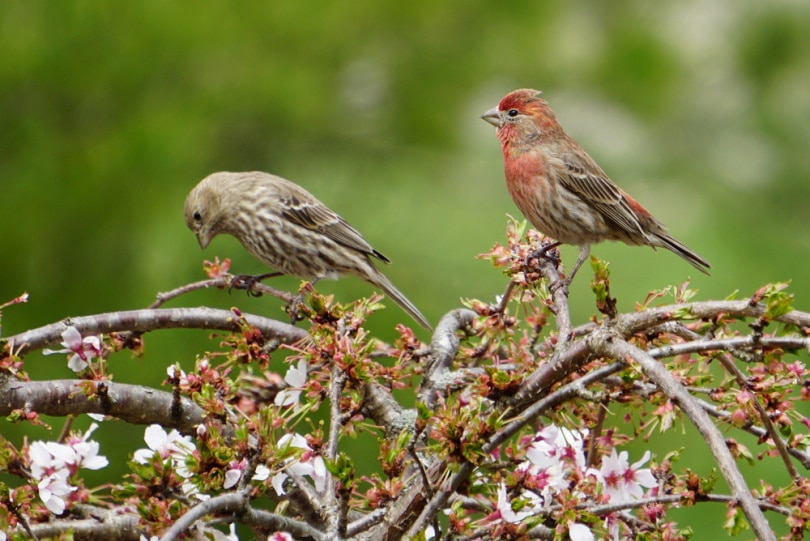
| Population: | 40 million |
| Wingspan: | 8 to 10 inches |
| Weight: | 0.6 to 0.9 ounces |
| Length: | 5 to 5.5 inches |
The house finch population is fragmented, but the start of their western presence begins in Colorado. They’re a year-long resident there for just about the entirety of the state, making them common at feeders throughout the entire year.
4. Downy Woodpecker

| Population: | 14 million |
| Wingspan: | 10 to 12 inches |
| Weight: | 0.75 to 1 ounce |
| Length: | 5.7 to 6.7 inches |
If you’re looking to attract woodpeckers to your Colorado backyard, the downy woodpecker is one of the best choices. They love suet and sunflower seeds, and they’re in the state year-round. Just know that they’re a small woodpecker, so don’t look for a massive bird!
5. Northern Flicker

| Population: | 16 million |
| Wingspan: | 16.5 to 20 inches |
| Weight: | 4 to 5.5 ounces |
| Length: | 11 to 12 inches |
While it’s not easy to attract a northern flicker to a feeder for easy spotting, they do have a year-round presence in Colorado. They primarily eat insects off the ground, but you can see them at suet feeders from time to time.
6. Broad-Tailed Hummingbird
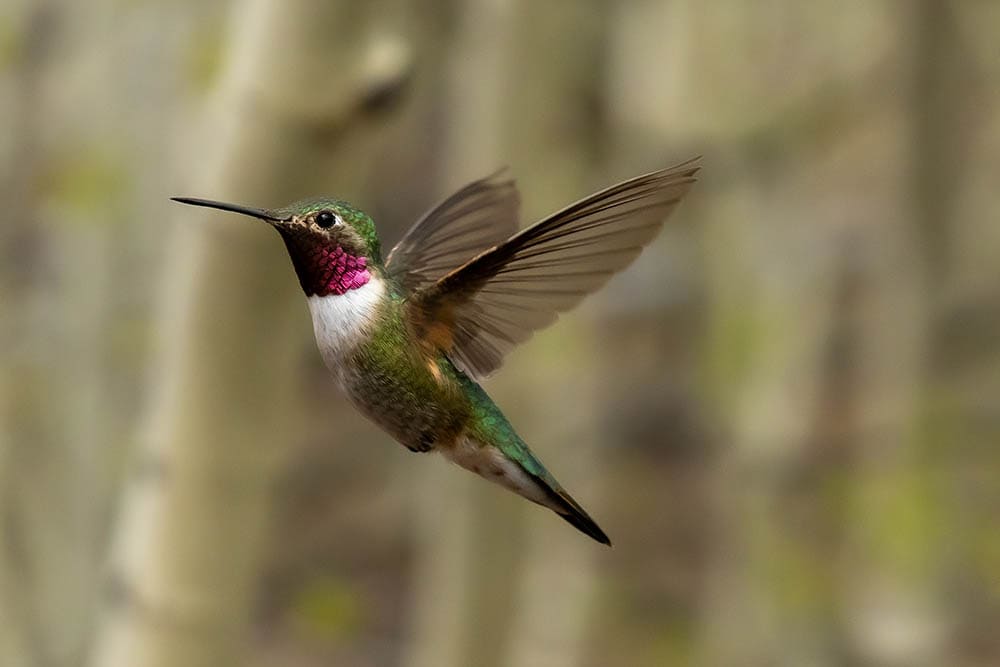
| Population: | 9.8 million |
| Wingspan: | 5.25 inches |
| Weight: | 0.1 to 0.2 ounces |
| Length: | 3 to 3.5 inches |
The broad-tailed hummingbird is a beautiful small bird that travels up to the mountainous regions in Colorado during the summer months to breed.
If you live at a high elevation, as many people in Colorado do, there’s a good chance that you’ll get to enjoy these beautiful birds throughout all the warm months.
7. European Starling
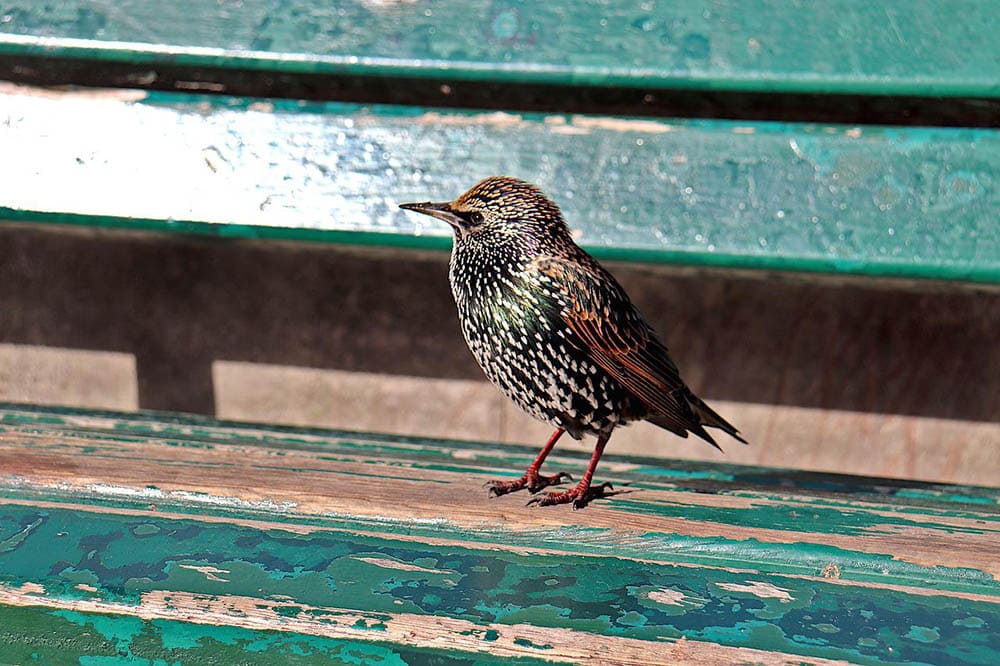
| Population: | 200 million |
| Wingspan: | 12 to 17 inches |
| Weight: | 2 to 3.6 ounces |
| Length: | 7.5 to 9 inches |
The European starling is a highly invasive species that is known to wreak havoc on local bird populations. They’ll eat just about anything and thrive near humans. While just a few of these birds aren’t a big problem, they typically travel in massive flocks and aggressively drive away local birds.
8. Hairy Woodpecker
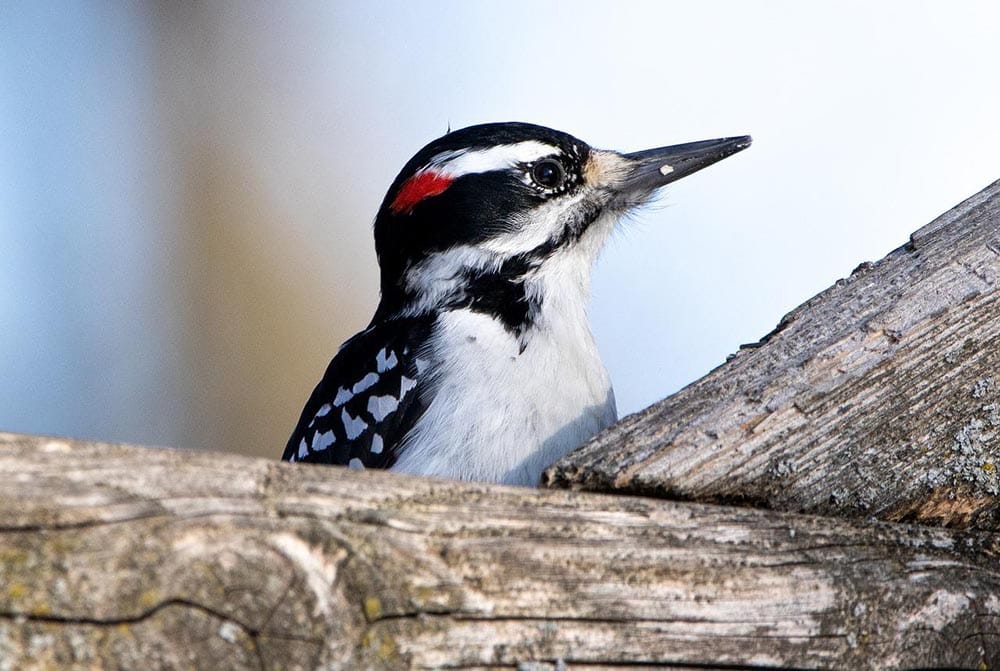
| Population: | 8.9 million |
| Wingspan: | 15 inches |
| Weight: | 1.5 to 3.5 ounces |
| Length: | 9 to 11 inches |
The hairy woodpecker is almost identical to the downy woodpecker, with the most notable difference being their size. However, the hairy woodpecker does have a slightly longer bill that they use for pecking into mature trees.
9. Dark-Eyed Junco
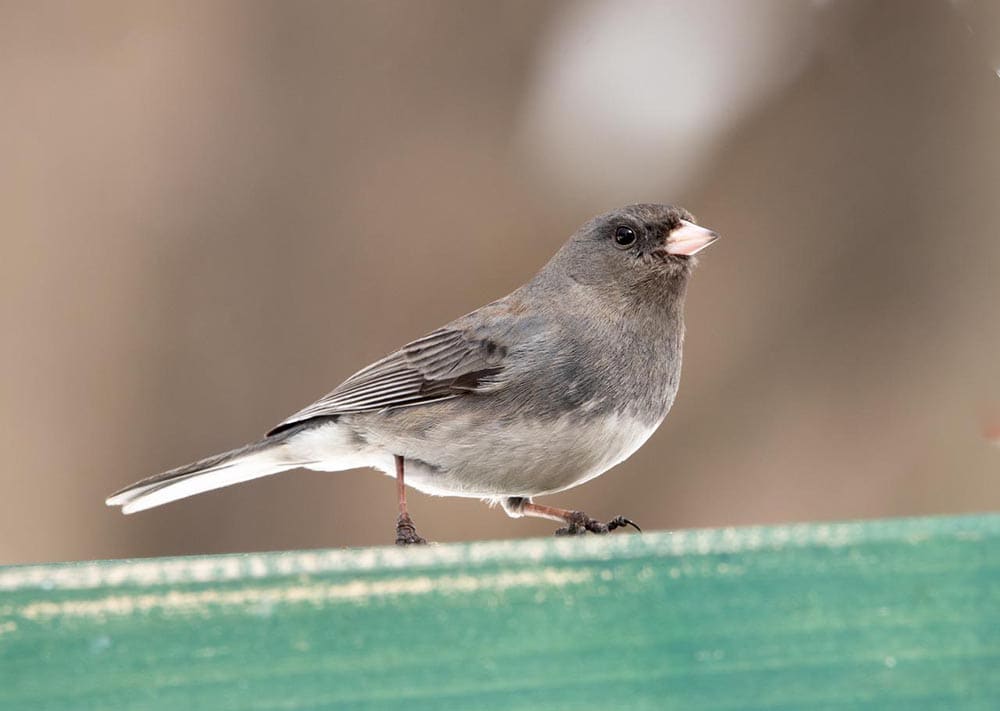
| Population: | 630 million |
| Wingspan: | 7 to 10 inches |
| Weight: | 0.6 to 1 ounce |
| Length: | 5.5 to 6.5 inches |
It depends on where you live in Colorado if the dark-eyed junco is a year-round resident or just a winter visitor, but these small birds are favorites to see in backyards. They love seeds too, making them relatively easy to attract to the right kinds of feeders.
10. Red-Winged Blackbird
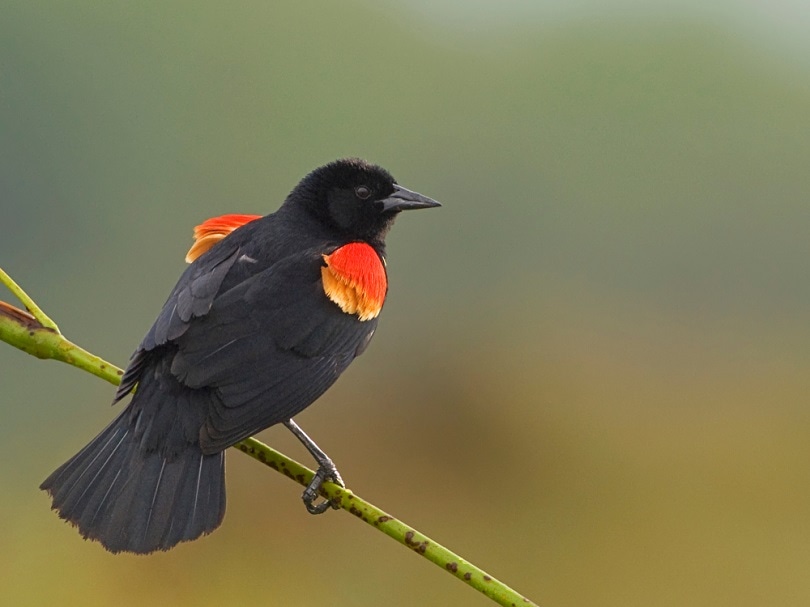
| Population: | 210 million |
| Wingspan: | 12 to 16 inches |
| Weight: | 1.1 to 2.7 ounces |
| Length: | 6.7 to 9.1 inches |
The red-winged blackbird loves marshes and other wet areas, and their appearance matches their name. They’re all-black birds with tips of red and yellow on their shoulders. You can find them in Colorado regardless of the season.
11. Black-Capped Chickadee
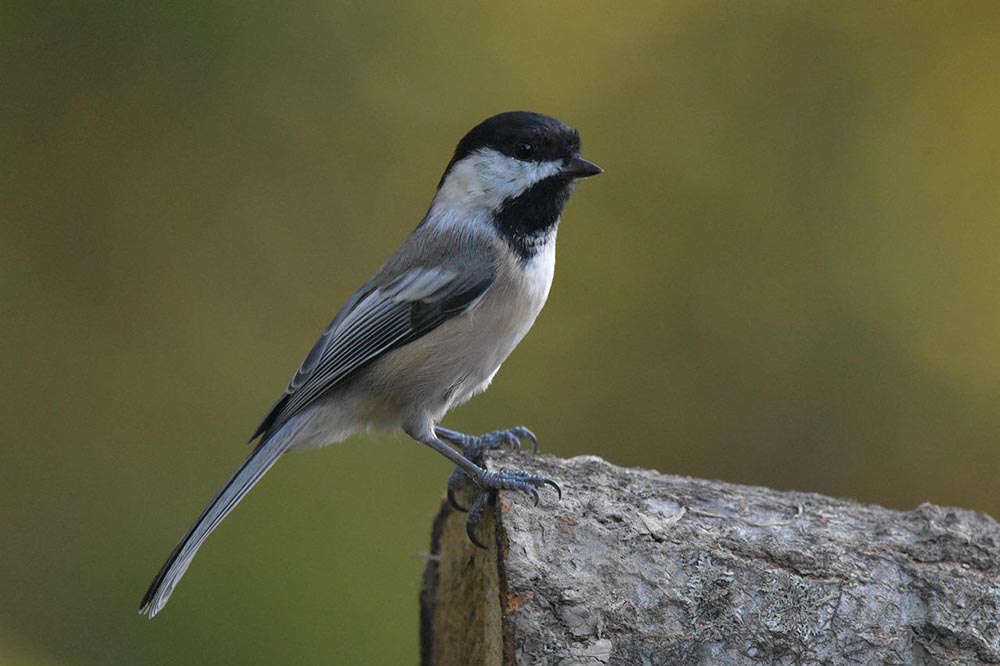
| Population: | 41 million |
| Wingspan: | 6 to 8 inches |
| Weight: | 0.3 to 0.5 ounces |
| Length: | 4.7 to 6 inches |
While you typically can’t find black-capped chickadees this far south, Colorado is the exception. They hang out in the state year-round, and they love visiting feeders. Their favorite foods include sunflower, peanuts, and suet.
12. American Goldfinch
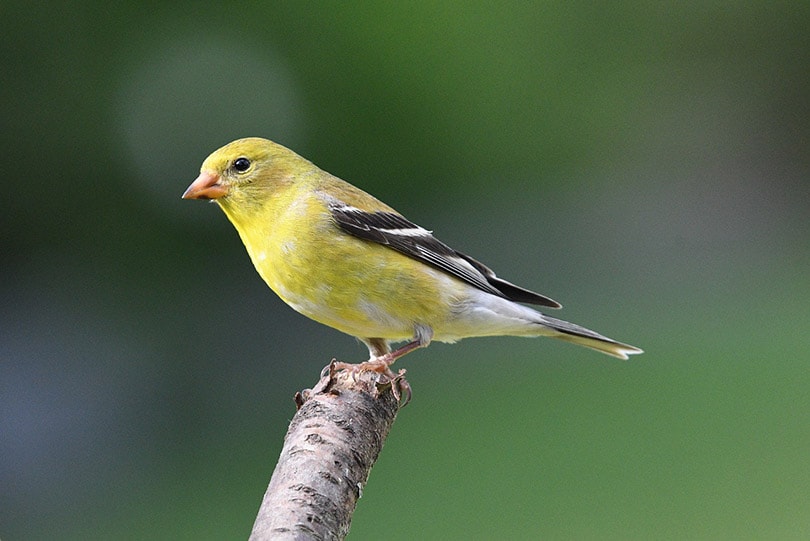
| Population: | 24 million |
| Wingspan: | 7.5 to 8.6 inches |
| Weight: | 0.5 ounces |
| Length: | 4.3 to 6 inches |
While you can find the American goldfinch in parts of Colorado year-round, they have such drastically different appearances for each season, you might not even recognize that they’re the same bird!
During the warm breeding months, they have bright-yellow plumage, but during the winter months, they have a brown, black, and white appearance.
13. Black-Billed Magpie

| Population: | 6 million |
| Wingspan: | 22 to 24 inches |
| Weight: | 5 to 7.5 ounces |
| Length: | 17.7 to 23.5 inches |
The black-billed magpie is a large bird that many humans view as a pest. They eat just about anything, from berries to insects and even garbage. They also drive off smaller birds, and they’re noisy but not in the aesthetically pleasing way of finches and other songbirds.
14. House Wren

| Population: | 160 million |
| Wingspan: | 5.9 inches |
| Weight: | 0.35 to 0.4 ounces |
| Length: | 4.3 to 5.1 inches |
If you’re trying to spot a house wren in Colorado, you’ll need to keep an eye out during the warm months, as they only come up for the breeding season.
They have a particular song that is enjoyable to listen to, but you can’t really attract them to feeders. They typically only eat insects, so you might see them flying across your yard to capture their next meal!
15. White-Breasted Nuthatch

| Population: | 10 million |
| Wingspan: | 7.9 to 10.6 inches |
| Weight: | 0.6 to 1.1 ounces |
| Length: | 5 to 5.5 inches |
The white-breasted nuthatch is a beautiful small bird with a blue-gray color throughout their body, and they love forested areas. While you can attract them to feeders with sunflower seeds, peanuts, or suet, you’ll have far better success if there are a few trees around for them to perch on.
16. House Sparrow

| Population: | 82 million |
| Wingspan: | 9 inches |
| Weight: | 0.85 to 1.5 ounces |
| Length: | 6 inches |
While the house sparrow is technically an invasive species, they’re now so common, you can easily find them throughout all of Colorado year-round. They thrive near humans and routinely visit feeders and make their nests in backyards.
17. American Crow
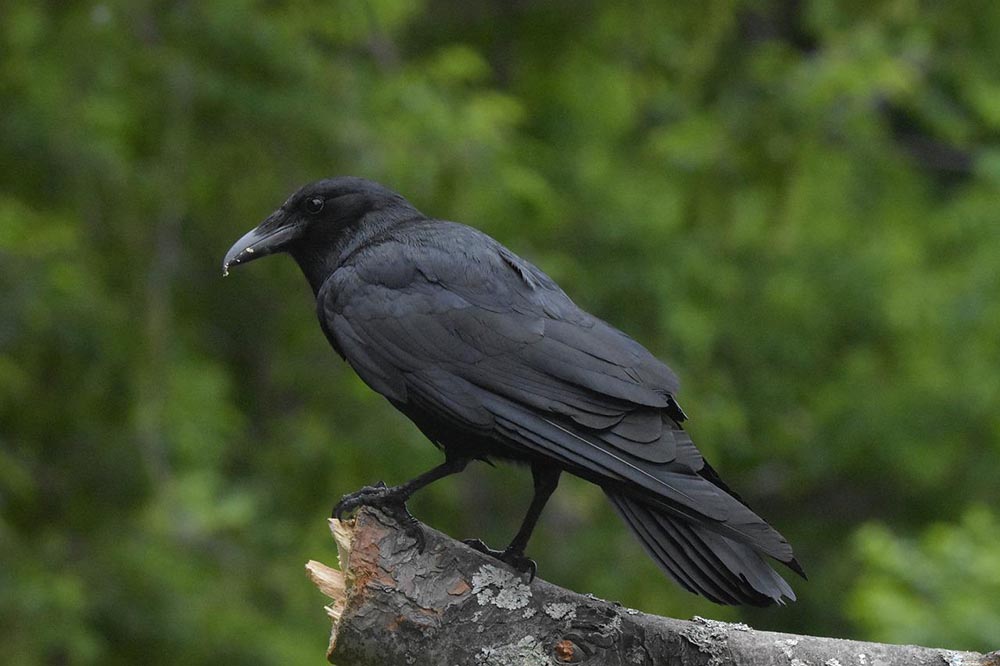
| Population: | 31 million |
| Wingspan: | 2.8 to 3.3 feet |
| Weight: | 0.7 to 1.4 pounds |
| Length: | 16 to 21 inches |
Crows might just be the smartest birds in the United States, and they have a presence in Colorado every season. They thrive near humans and don’t mind scavenging, but they’ll also chow down at large feeders with peanuts or suet.
18. Barn Swallow

| Population: | 190 million |
| Wingspan: | 12.5 to 13.5 inches |
| Weight: | 0.6 to 0.7 ounces |
| Length: | 5.7 to 7.8 inches |
Barn swallows only visit Colorado during the warmer winter months, but they help keep insect populations under control when they’re there. They don’t care about feeders, but if you have any standing water and plenty of space, you’re sure to have a few barn swallows come to visit.
19. Blue Jay
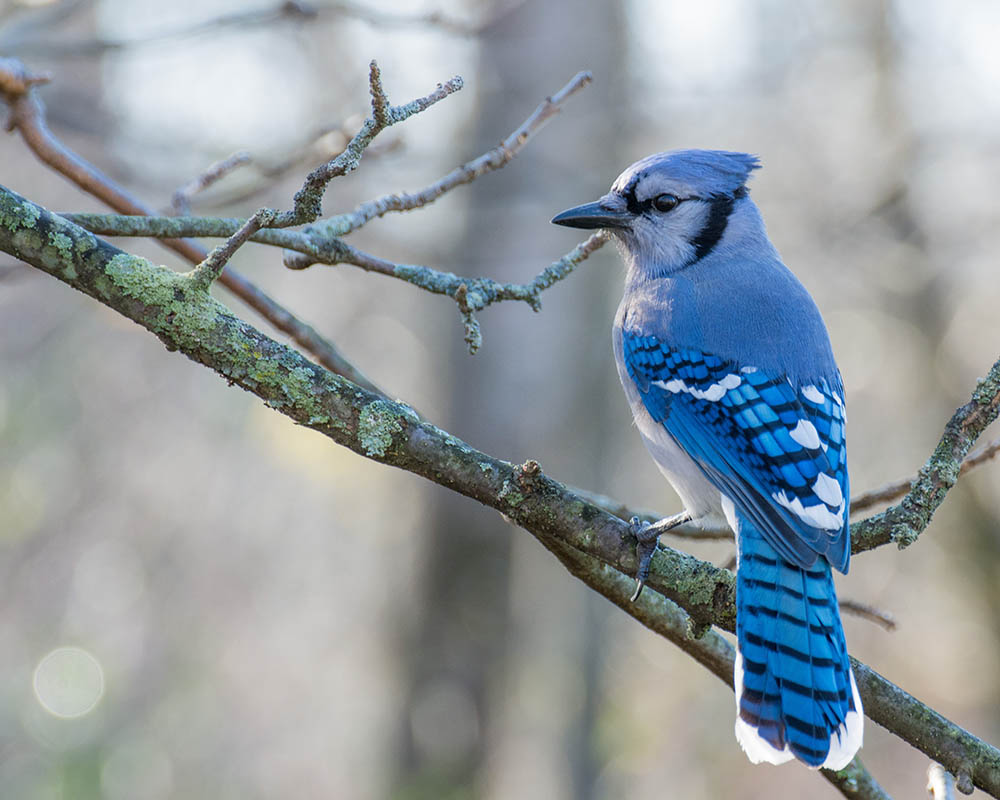
| Population: | 22 million |
| Wingspan: | 13 to 17 inches |
| Weight: | 2.3 to 3.8 ounces |
| Length: | 8.7 to 12 inches |
While you can’t find blue jays throughout the entire state of Colorado, if you live on the eastern side of the state, you’ll see them from time to time. They have a tufted blue crown on their head and vibrant blue-and-black colors on their wings.
While they’re beautiful birds, they’re also aggressive and often drive away other birds trying to get food.
20. Song Sparrow
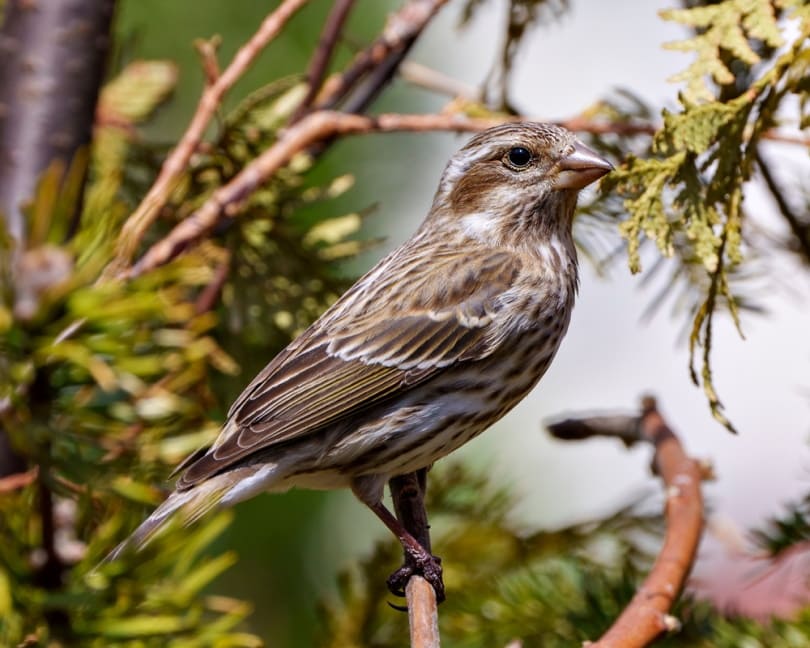
| Population: | 130 million |
| Wingspan: | 7 to 10 inches |
| Weight: | 0.4 ounces |
| Length: | 4.75 inches |
If you hear a bird with a wide array of chirps and songs, there’s a good chance that you have a song sparrow hanging around. They live year-round in large portions of the state, and in the other parts, they’re there during the non-breeding season.
21. Eurasian Collared-Dove

| Population: | 50 million |
| Wingspan: | 13.8 inches |
| Weight: | 5 to 6.3 ounces |
| Length: | 11.5 to 12 inches |
The Eurasian collared dove is an invasive species that works their way into Colorado throughout the entire year. They look much like a pigeon and often travel in flocks.
They’re often seen as pests, as they’ll drive away other birds from feeders and quickly empty them.
22. Yellow Warbler

| Population: | 97 million |
| Wingspan: | 6.3 to 8 inches |
| Weight: | 0.3 to 0.4 ounces |
| Length: | 4.7 to 5.1 inches |
You can only find the yellow warbler during the breeding season in Colorado, but they have a beautiful yellow appearance that makes them a favorite for many birders.
The yellow warbler loves suet and berries, so having these things around your yard is one of the easiest ways to attract these birds during the summer months.
23. Steller’s Jay

| Population: | 2.8 million |
| Wingspan: | 17.3 inches |
| Weight: | 3.5 to 5 ounces |
| Length: | 11.8 to 13.5 inches |
If you’re looking to spot a Steller’s jay, you’ll need to head to the western side of the state, where they live year-round. They’re often mistaken for a blue jay by amateurs, but they don’t share the same range, and Steller’s jays are much darker in color.
24. Brown-Headed Cowbird
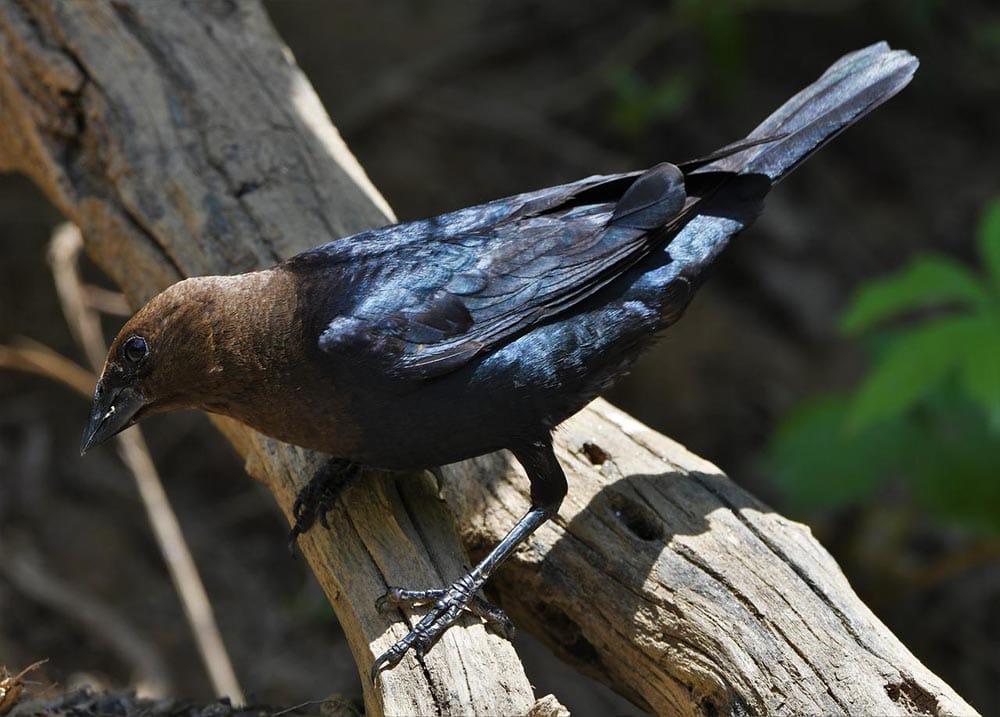
| Population: | 56 million |
| Wingspan: | 12 to 15 inches |
| Weight: | 1.5 ounces |
| Length: | 6 to 8.5 inches |
The brown-headed cowbird is a stocky bird that travels to Colorado during the breeding season. You can find these brown birds in Colorado in residential areas, pastures, orchards, and cemeteries, as they’ve adapted from their traditional habitats.
You won’t find any brown-headed cowbird nests, though; instead, they drop off their eggs in other birds’ nests and have them do the hard work of raising their offspring!
25. Western Meadowlark
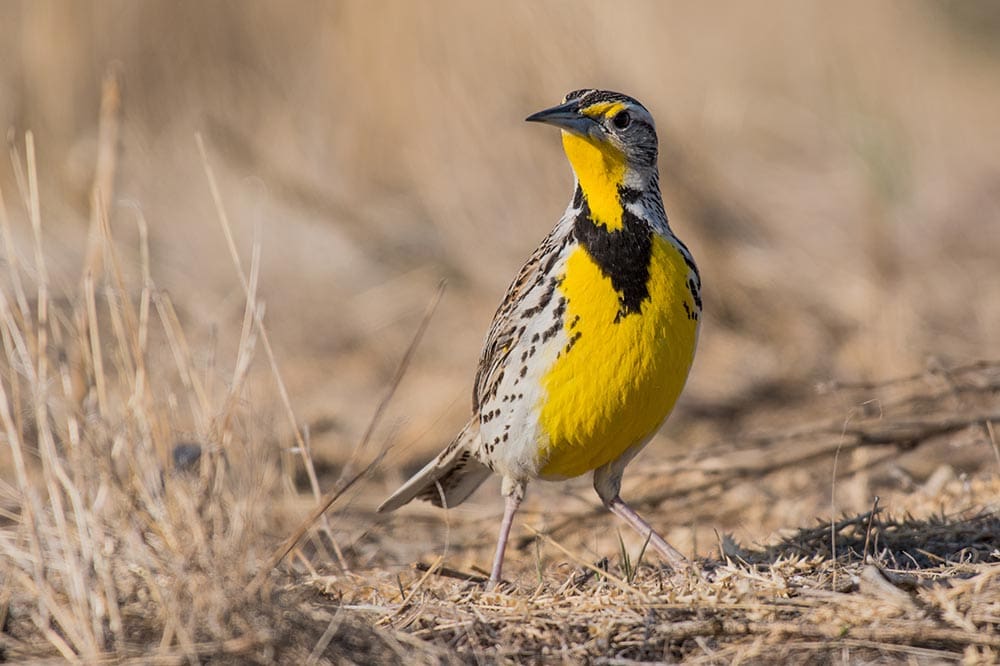
| Population: | 85 million |
| Wingspan: | 16.1 inches |
| Weight: | 3.1 to 4.1 ounces |
| Length: | 6.3 to 10.2 inches |
While the western meadowlark lives year-round in most of Colorado, they’re a bit challenging to spot because they don’t visit feeders. Instead, they eat grains and insects. They have a bright-yellow appearance on their underbody, especially during the warm summer months.
26. Common Grackle
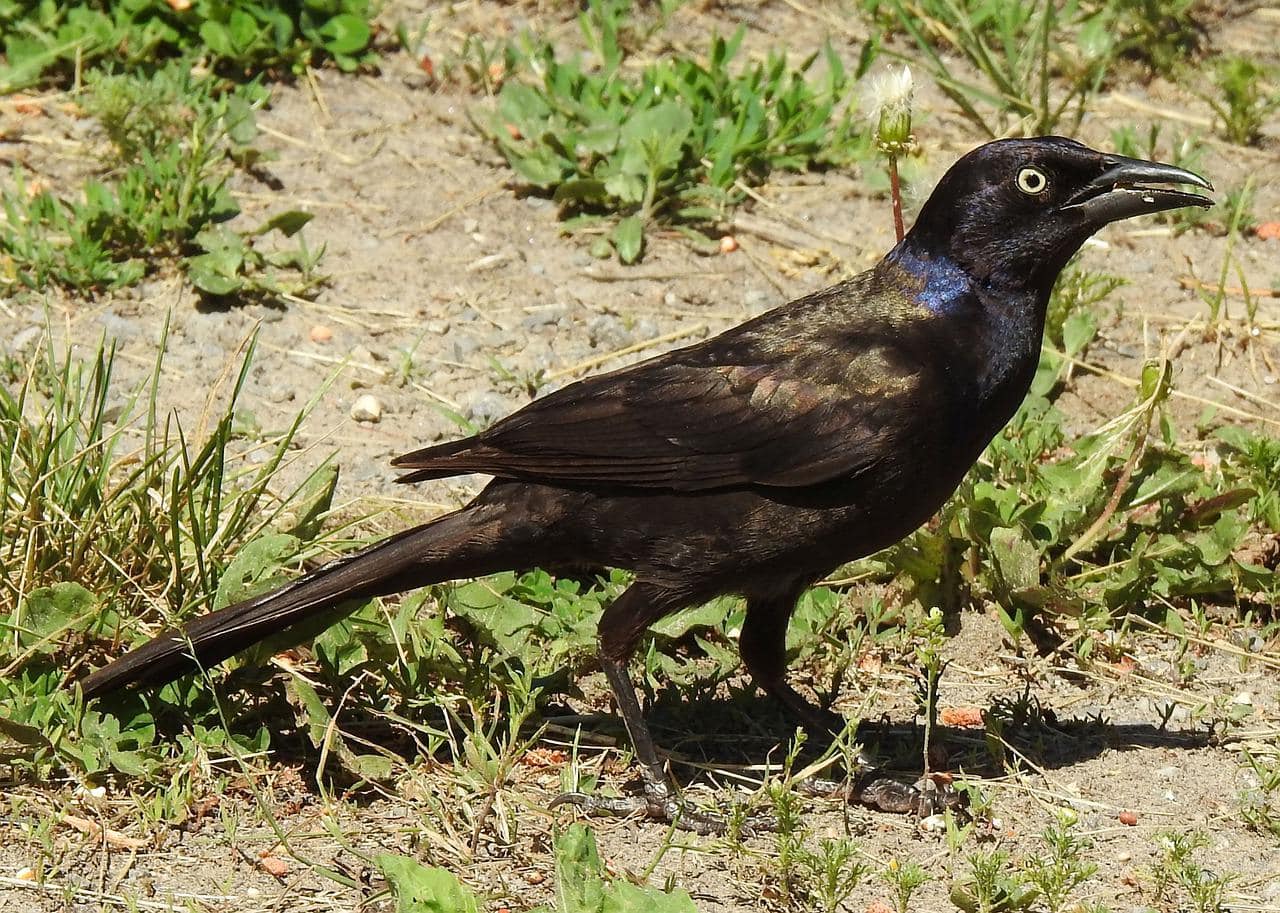
| Population: | 73 million |
| Wingspan: | 14 to 18 inches |
| Weight: | 2.5 to 5 ounces |
| Length: | 11 to 13 inches |
You’ll only find a common grackle in Colorado during the breeding season, but during those warm months, they’re quite common. They love eating grains like corn and rice, but due to their similar appearance to a crow and the fact that they travel in large flocks, not too many people try to attract them to their yard.
27. Bushtit

| Population: | 3.2 million |
| Wingspan: | 6 to 7 inches |
| Weight: | 0.1 to 0.2 ounces |
| Length: | 2.8 to 3.1 inches |
Bushtits are extremely small and stocky birds that you can spot in Colorado’s south and western parts. They don’t visit feeders, though, as they primarily eat insects. These tiny birds are always flying around trying to catch their next meal.
28. Rock Pigeon
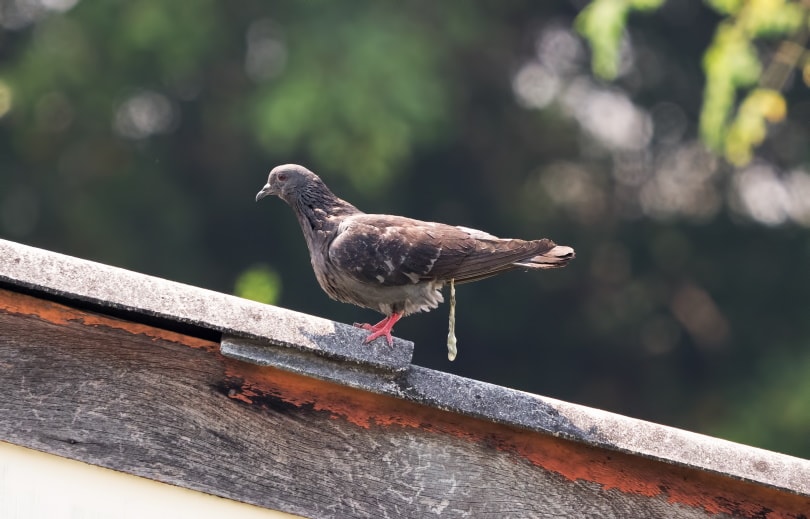
| Population: | 120 million |
| Wingspan: | 20 to 26 inches |
| Weight: | 8.5 to 13 ounces |
| Length: | 12.5 inches |
Rock pigeons aren’t most people’s favorite birds, but there’s no denying that they’re everywhere. They thrive year-round in Colorado, and you can find them in cities, suburbs, and just about everywhere else. They also travel in flocks, so if you see one around, there are probably a few dozen nearby.
29. Rufous Hummingbird
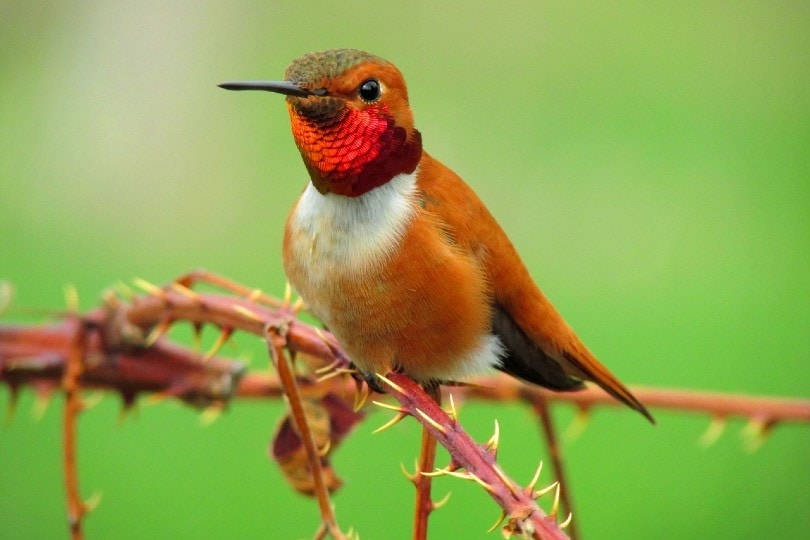
| Population: | 22 million |
| Wingspan: | 4.3 inches |
| Weight: | 0.1 to 0.2 ounces |
| Length: | 2.8 to 3.5 ounces |
The rufous hummingbird can be found in Colorado only if you’re looking at the right time. During their breeding or non-breeding seasons, they migrate through the state but don’t settle down there.
30. Bullock’s Oriole

| Population: | 3.8 million |
| Wingspan: | 9.1 to 11.8 inches |
| Weight: | 1.1 to 1.4 ounces |
| Length: | 6.7 to 7.5 inches |
If it’s during the warmer breeding season, keep your eyes peeled in Colorado for a Bullock’s oriole. They feed from the same kind of feeders as hummingbirds, so if you have a nectar feeder, leave it out even when it’s outside the migration season.

Conclusion
Now that you know more about the songbirds in Colorado, all that’s left is for you to put out feeders, fill them up, and start trying to identify the birds that come to visit.
There are plenty of great birds living in Colorado, so good luck and happy birding!
See also:
Featured Image Credit: Takashi_Yanagisawa, Pixabay
Table of Contents
- The 30 Common Backyard Birds in Colorado (with Pictures)
- 1. American Robin
- 2. Mourning Dove
- 3. House Finch
- 4. Downy Woodpecker
- 5. Northern Flicker
- 6. Broad-Tailed Hummingbird
- 7. European Starling
- 8. Hairy Woodpecker
- 9. Dark-Eyed Junco
- 10. Red-Winged Blackbird
- 11. Black-Capped Chickadee
- 12. American Goldfinch
- 13. Black-Billed Magpie
- 14. House Wren
- 15. White-Breasted Nuthatch
- 16. House Sparrow
- 17. American Crow
- 18. Barn Swallow
- 19. Blue Jay
- 20. Song Sparrow
- 21. Eurasian Collared-Dove
- 22. Yellow Warbler
- 23. Steller’s Jay
- 24. Brown-Headed Cowbird
- 25. Western Meadowlark
- 26. Common Grackle
- 27. Bushtit
- 28. Rock Pigeon
- 29. Rufous Hummingbird
- 30. Bullock’s Oriole
- Conclusion
About the Author Robert Sparks
Robert’s obsession with all things optical started early in life, when his optician father would bring home prototypes for Robert to play with. Nowadays, Robert is dedicated to helping others find the right optics for their needs. His hobbies include astronomy, astrophysics, and model building. Originally from Newark, NJ, he resides in Santa Fe, New Mexico, where the nighttime skies are filled with glittering stars.
Related Articles:
Monocular vs Telescope: Differences Explained (With Pictures)
10 Types of Hummingbirds in Arkansas (With Pictures)
8 Types of Hummingbirds in Nebraska (With Pictures)
5 Types of Hummingbirds in Idaho (With Pictures)
3 Types of Hummingbirds in Mississippi (With Pictures)
8 Types of Hummingbirds in Kansas (With Pictures)
5 Types of Hummingbirds in West Virginia (With Pictures)
5 Types of Hummingbirds in Ohio (With Pictures)
